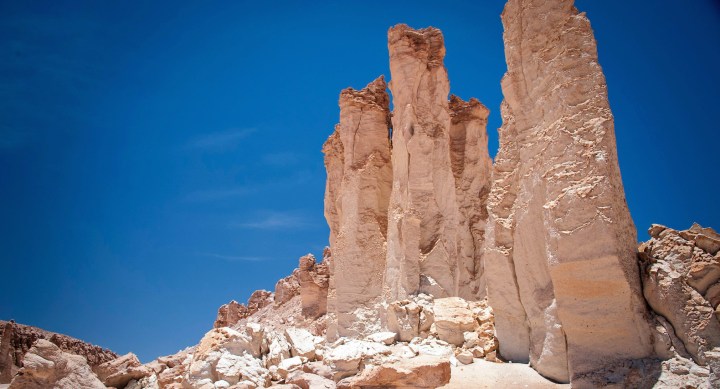For Decades, People Thought a Mummy Found in Chile’s Atacama Desert Was an Alien

Creative Commons "Rock formation in the Atacama Desert” by Lisa Germany/ESO is licensed under CC BY 4.0
At six inches long and with a pointed skull, a skeleton found in the Atacama Desert in Chile was originally thought to be a mummified alien. For nearly two decades, the rumors persisted, with 2013 UFO documentary Sirius lending credence to the theory that Ata – the skeleton’s given name – was indeed an extraterrestrial. This week a group of scientists revealed that Ata was a human girl with indigenous Chilean and European ancestry. Ata, who had large eye sockets and 10 ribs instead of 12, likely had a bone disorder never identified before.
The research began in 2012 after Garry P. Nolan – an immunologist at Stanford University – learned that Sirius was in production. The producers and the skeleton’s owner took him up on his offer to look into Ata’s DNA. Dr. Nolan and his team easily extracted DNA. “We could tell this was human right away,” Atul Butte, a computational biologist at University of California, San Francisco, told The New York Times. Their findings are being published in Genome Research.
Though the scientists do not know the skeleton’s age, they know that because the DNA has not broken down substantially and because of the European ancestry, she’s probably less than 500 years old. Size wise, she’s comparable to a fetus, but some of her bones were as developed as a 6 year old’s.
Sanchita Bhattacharya – a researcher who works with Dr. Butte – searched Ata’s DNA for mutations. What she found was that the skeleton carried mutations in genes that can cause the bones to age at an accelerated rate. She also may have had congenital diaphragmatic hernia, a life-threatening condition where the diaphragm cannot fully develop. Bhattacharya hypothesizes that Ata was stillborn. Nolan, who agrees with this theory, says that these mutations may help them “to develop therapies or drugs that drive bone development for people in, say, catastrophic car crashes.”

And though their research may help others, it’s unfortunate that it came at the expense of someone long treated like a sideshow. “While this started as a story about aliens, and went international, it’s really a story of a human tragedy,” he said, according to The Guardian. “A woman had a malformed baby, it was preserved in a manner and then ‘hocked’ or sold as a strange artifact. It turns out to be human, with a fascinating genetic story from which we might learn something important to help others. May she rest in peace.”